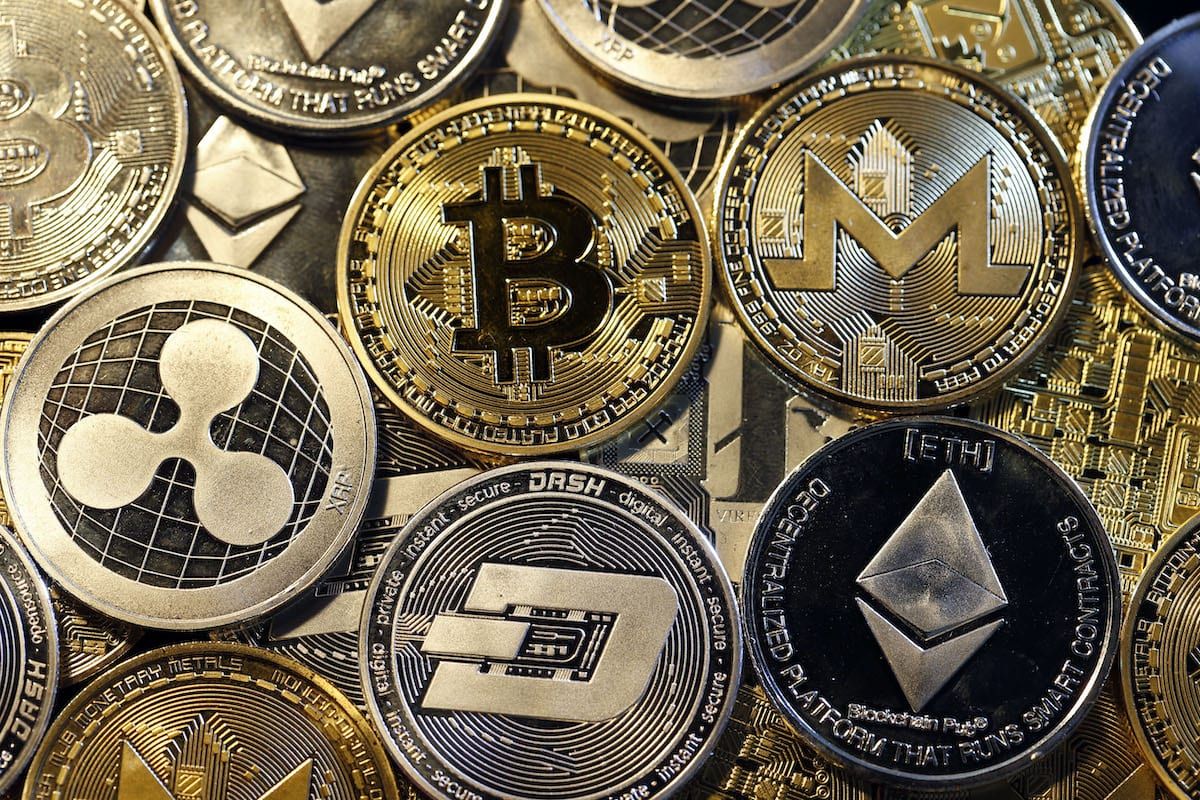In the rapidly evolving world of cryptocurrencies, finding an exchange that offers the best value for your money is crucial. This guide is designed to navigate you through the complexities of crypto exchange fees, security, and service quality to help you select the cheapest and most reliable platform for your trading needs. Drawing on extensive research and expert analysis, we provide a comprehensive overview of how to identify cost-effective exchanges without compromising on essential features.
Key Takeaways
- Understanding the various fees associated with crypto exchanges, including trading, transaction, and withdrawal fees, is essential for finding the cheapest option.
- Evaluating an exchange’s security measures and reputation is just as important as low fees to ensure the safety of your investments.
- Your trading style and volume play a significant role in determining which exchange will be the most cost-effective for your needs.
- Our rigorous methodology for ranking exchanges includes testing by crypto experts, analyzing multiple data points, and continuous monitoring for updates.
- Maximizing value on crypto exchanges can be achieved by leveraging low-fee platforms, taking advantage of promotions, and understanding the trade-offs between cost and features.
Understanding Cryptocurrency Exchange Fees

Types of Fees to Consider
When diving into the world of cryptocurrency trading, it’s essential to understand the various fees that can affect your bottom line. Cryptocurrency exchanges must adapt UX for all users, and part of that adaptation is presenting fee structures in a clear and comprehensible manner. Here’s a breakdown of the common fees you might encounter:
- Trading Fees: These are incurred with each buy or sell transaction and can be a flat rate or a percentage of the trade value. Exchanges may differentiate between ‘maker’ and ‘taker’ fees, depending on whether your order adds liquidity to the market or takes it away.
- Withdrawal Fees: Charged when you transfer your crypto out of the exchange, these fees can vary widely between platforms.
- Deposit Fees: Some exchanges charge a fee for depositing funds or crypto assets.
- Other Charges: Advanced trading strategies like margin trading come with their own set of fees.
Remember, while some platforms may boast zero fees, they might be making up the cost in the spread—the difference between the buy and sell prices—which can sometimes be more costly than traditional fees.
Understanding fee structures is crucial for trading profitability, as they can significantly impact your investment returns. Exchanges play a key role in the digital currency landscape, and selecting one with a transparent and competitive fee structure is vital.
Calculating the True Cost of Transactions
To accurately determine the true cost of cryptocurrency transactions, one must look beyond the advertised trading fees. The real expense includes various factors such as spread markups, withdrawal fees, and potential discounts for trading volume or holding an exchange’s native cryptocurrency. For instance, a spread markup might be around 0.5 percent, with trading fees starting at a nominal amount and scaling with the transaction size.
Here’s a simplified example of how fees can vary across different exchanges:
| Exchange | Trading Fee | Spread Markup | Minimum Deposit |
|---|---|---|---|
| Kraken | 0.00% – 0.26% | Low | $1 |
| Coinbase | Variable | Medium | $2 |
| Crypto.com | 0.00% – 0.075% | Low | €1 |
It’s essential to calculate the total cost by considering these fees in conjunction with the amount you plan to trade. Dwelling solely on maker and taker fees can be counterproductive since you cannot control whether your order is processed as a maker or a taker. Instead, focus on the overall fee structure and any available discounts.
When evaluating the cost-effectiveness of a crypto exchange, remember that the lowest fees do not always equate to the highest value. Assess the complete fee schedule, including any tiered pricing or promotional offers, to understand the full financial impact of your trades.
Comparing Fee Structures Across Exchanges
When venturing into the world of cryptocurrency trading, comparing fee structures across exchanges is crucial for maximizing your investments. Each platform has its unique fee schedule, which can significantly impact your trading costs over time.
For instance, here’s a simplified breakdown of Coinbase’s advanced trade fees based on 30-day trading volume:
| 30-Day Trading Volume (USD) | Taker Fee | Maker Fee |
|---|---|---|
| Up to $10,000 | 0.60% | 0.40% |
| $10,000 to $50,000 | 0.40% | 0.25% |
| $50,000 to $100,000 | 0.25% | 0.15% |
| … | … | … |
It’s essential to not only look at trading fees but also consider withdrawal and deposit fees, as these can add up, especially for frequent traders.
By meticulously analyzing the fee structures, you can identify which exchanges offer the most cost-effective solutions for your trading habits. Remember to factor in all associated costs, such as withdrawal and deposit fees, to find the cheapest solution.
Evaluating Exchange Security and Trustworthiness

The Importance of Security Measures
In the realm of cryptocurrency exchanges, security is paramount. Users must stay vigilant, conduct research, and protect their investments. Exchanges like Gemini have set high standards by not only encouraging two-factor authentication but also by achieving SOC 2 certification, which is a testament to their robust security and compliance frameworks.
Here are some key security features to look for:
- Two-factor authentication (2FA)
- Device management and authorization
- Cold storage options
- Insurance coverage
- Regular third-party security audits
While some exchanges may charge higher fees for enhanced security, the peace of mind and protection offered often justify the cost. It’s crucial to weigh the trade-offs between cost and security features when choosing an exchange.
Assessing the Reputation of Exchanges
When venturing into the world of cryptocurrency trading, the reputation of an exchange is a cornerstone of your investment’s safety. Reputable exchanges have a proven track record of reliability, customer satisfaction, and adherence to regulatory standards. It’s essential to conduct thorough research, which includes reading customer reviews and examining the exchange’s historical performance.
To aid in this process, consider the following points:
- Look for exchanges with a history of secure operations and positive user feedback.
- Check for regulatory compliance and any history of security breaches or legal issues.
- Evaluate the variety of cryptocurrencies offered and the user interface’s ease of use.
The 2023 Buyer’s Guide simplifies selecting top crypto exchanges in the USA, highlighting the importance of market liquidity and a seamless user experience.
Remember, an exchange’s reputation is not just about the absence of negative incidents, but also about the presence of robust security measures and reliable customer support. These factors contribute to a trustworthy trading environment where investors can focus on their trading strategies rather than worry about the safety of their assets.
Ensuring the Safety of Your Investments
When it comes to safeguarding your cryptocurrency investments, the choice of exchange is paramount. The security protocols and features of an exchange are critical indicators of its trustworthiness and reliability. Before committing to an exchange, it’s essential to review its security measures thoroughly.
Here are some common security features you should look for:
- Two-factor authentication (2FA)
- Compliance with local regulations and licensing
- An insurance policy to protect against potential losses
- Responsive customer support
- A clear distinction between hot (online) and cold (offline) storage practices
- Active bug bounty programs to encourage the identification and fixing of security flaws
Remember, the safety of your investments is not guaranteed, and you should never invest more than you can afford to lose. Always consider your personal circumstances and take the time to explore all your options before making any investment.
One of the most crucial aspects of cryptocurrency ownership is the management of private keys. Losing access to your private keys can result in the irreversible loss of your assets. Therefore, it’s imperative to understand and utilize the storage options provided by the exchange to maintain control over your digital assets.
Selecting the Right Exchange for Your Trading Needs

Identifying Your Trading Style and Requirements
Before diving into the vast sea of crypto exchanges, it’s crucial to identify your trading style and requirements. This self-assessment will determine the features and tools you’ll need to trade effectively. For instance, if you’re a casual investor, a platform with a straightforward interface and basic trading features might suffice. Conversely, active traders may prioritize exchanges offering advanced order types, margin trading, and detailed charting tools.
- Casual Investor: Simple interface, basic trading features.
- Active Trader: Advanced charting, complex order types, margin trading.
By understanding your trading frequency and the complexity of your desired transactions, you can narrow down the list of suitable exchanges.
Remember, the right exchange for a day trader looking for volume discounts and high liquidity might differ significantly from one suited for a long-term investor focused on security and ease of use. Always consider how the exchange’s offerings align with your investment goals and trading strategy.
The Role of Trading Volumes and Market Liquidity
When selecting a cryptocurrency exchange, trading volumes and market liquidity are critical factors to consider. High trading volumes indicate a vibrant market where buying and selling can occur with minimal impact on the price, known as slippage. Conversely, low-volume markets may lead to less favorable prices when executing trades, as there’s less certainty of finding a counterparty at your desired price point.
The volume indicated is spread across a number of exchanges, each of which will have inefficient markets for anyone wanting to buy and sell the Shopping coin.
Exchanges with substantial liquidity can offer better pricing and faster execution of orders. This is because they connect to various liquidity pools, which are essentially collections of buyers and sellers. Here’s a quick look at how liquidity and trading volume can affect your trading experience:
- Liquidity Pools: Exchanges with access to a diverse range of liquidity sources can provide more competitive pricing.
- Trading Volume: Ensures that there is enough market activity for your trades to be executed promptly and at predictable prices.
- Slippage: In low-volume markets, you may experience slippage, resulting in buying at a higher or selling at a lower price than expected.
Availability of Educational Resources and Support
When venturing into the world of cryptocurrency trading, the availability of educational resources and support can be a game-changer, especially for newcomers. Selecting an exchange that offers comprehensive learning tools can significantly enhance your trading experience. Exchanges vary widely in the quality and quantity of educational content they provide, from in-depth articles and tutorials to webinars and interactive courses.
- Educational Content: Quality and variety of learning materials.
- Interactive Learning: Availability of webinars, courses, and quizzes.
- Support: Types of customer support, including live chat, email, and phone.
It’s crucial to choose a platform that not only educates you on the basics but also keeps you informed about the latest market trends and trading strategies. This commitment to education can empower you to make more informed decisions and utilize the platform’s features to their fullest potential.
Remember, the right educational resources can demystify the complexities of cryptocurrency and provide you with the confidence to trade effectively. Evaluate each platform’s offerings carefully to ensure they meet your learning needs.
Our Comprehensive Methodology for Ranking Exchanges
Criteria Used in Our Evaluation
In our quest to rank the myriad of cryptocurrency exchanges, we’ve developed a comprehensive evaluation framework that scrutinizes each platform across multiple dimensions. Our methodology is grounded in a multi-criteria decision-making (MCDM) approach, recognizing that the evaluation of cryptocurrency exchanges is an MCDM problem based on many conflicting criteria.
We collect data directly from providers through detailed questionnaires and conduct first-hand testing and observation through provider demonstrations. This data, along with interviews of personnel and our specialists’ hands-on research, fuels our proprietary assessment process. The process scores each provider’s performance across more than 20 factors, culminating in a star rating system from one (poor) to five (excellent).
Our ratings are not static; they are dynamic reflections of the market, influenced by user feedback, reviews, and continuous monitoring. Positive feedback about ease of use, security, and overall satisfaction significantly impact our rankings.
The final score for each exchange is derived from over 130 data points across eight key ranking categories:
- Cost
- Reliability
- User experience
- Deposits & withdrawals
- Investing options
- Range of products/markets
- Research & analysis tools
- Educational & learning resources
This meticulous process ensures that our rankings are both comprehensive and current, providing you with the most reliable guide to selecting the right exchange for your trading needs.
Expert Insights and Analysis
In the rapidly evolving world of cryptocurrency exchanges, expert insights play a pivotal role in understanding the nuances of each platform. Our methodology incorporates perspectives from seasoned professionals who have a deep understanding of the market dynamics and technological advancements.
The insights gathered from experts are distilled into actionable advice, helping users to navigate the complex landscape of digital finance. For instance, our panel includes individuals with backgrounds in blockchain development, financial analysis, and cybersecurity, ensuring a well-rounded evaluation of each exchange.
- Market Trends: Understanding the direction of the cryptocurrency market.
- Technological Innovations: Staying abreast of the latest exchange features and security protocols.
- Regulatory Environment: Assessing how changes in regulations might impact exchange operations.
By synthesizing expert analysis with real-world data, we provide a comprehensive view that goes beyond mere numbers. This approach allows us to rank exchanges not just on cost, but on their ability to meet the evolving needs of traders in 2024.
Continuous Monitoring and Updating of Rankings
In the dynamic world of cryptocurrency exchanges, continuous monitoring and updating are crucial to providing accurate and relevant rankings. Our team diligently tracks changes in exchange policies, fee structures, and market conditions to ensure our recommendations remain up-to-date.
- Regular assessment of exchange performance metrics
- Updates to rankings based on latest data and user feedback
- Swift response to industry shifts and regulatory changes
Our methodology is not set in stone; it evolves with the market to guide you to the ideal crypto exchange.
Top-rated exchanges, such as Coinbase, are frequently reviewed against emerging platforms to maintain a comprehensive and current list. By staying informed with our latest findings, you can make well-founded decisions tailored to your individual trading needs.
Maximizing Value: Tips for Choosing Cost-Effective Exchanges

Leveraging Low-Fee Trading Platforms
In the quest for maximizing returns, selecting a low-fee trading platform is a critical step for any crypto investor. Platforms like BYDFi set the standard for minimal fees, offering a competitive edge with their maker-taker fee model. This model rewards those who add liquidity to the market, typically resulting in lower costs for these ‘makers’.
While no-fee options like Robinhood exist, they may lack comprehensive features that more established exchanges offer. It’s essential to balance the allure of low fees with the need for robust platform features and trading tools that can enhance your trading experience.
Remember, the cheapest option isn’t always the best. Consider the overall value provided by the platform, including security, user interface, and additional trading tools.
Here’s a quick look at some key considerations when evaluating low-fee platforms:
- Assess the fee structure for various activities such as withdrawals, trading, and deposits.
- Understand the difference between ‘maker’ and ‘taker’ fees and how your trading style affects the fees you’ll pay.
- Look beyond trading fees to other potential costs, like those associated with margin trading or quick buy features.
Taking Advantage of Promotions and Discounts
In the quest for the cheapest crypto exchange, promotions and discounts can play a pivotal role. Many exchanges offer introductory deals or temporary discounts to attract new users or reward loyal customers. These can significantly reduce your trading costs, especially when starting out or scaling up your investments.
- Look out for sign-up bonuses that offer free crypto or trading fee discounts.
- Pay attention to referral programs which can provide ongoing benefits for both the referrer and the new user.
- Monitor for seasonal promotions or special event discounts that exchanges often run during holidays or significant market events.
While promotions and discounts are enticing, always read the terms and conditions carefully. Some offers may come with strings attached, such as minimum trade volumes or time-limited validity, which could affect their overall value.
Remember, a discount is only beneficial if it aligns with your trading strategy and doesn’t compromise on security or essential features. It’s crucial to balance the allure of saving money with the integrity and reliability of the exchange.
Understanding the Trade-Offs Between Cost and Features
When selecting a cryptocurrency exchange, it’s crucial to strike a balance between cost-efficiency and the features offered. While low fees are attractive, they should not be the sole factor in your decision-making process. Exchanges with higher fees might offer advanced trading tools, superior security, or better customer support, which can be vital for certain trading strategies or for peace of mind.
It’s important to consider the overall value an exchange provides rather than focusing exclusively on the cost of transactions.
Here’s a quick overview of what to consider:
- Basic Trading Features: Look for a range of cryptocurrencies, fiat currency support, liquidity, and competitive trading fees.
- Advanced Trading Features: Assess the availability of complex order types and volume discounts for frequent trading.
- Margin Trading: If applicable, evaluate the margin trading rates and terms.
For example, some traders might find value in platforms like Coinbase’s Advanced Trade, which offers in-depth technical analysis and enhanced security, despite its cost. Remember, the right exchange for you balances the features you need with fees that won’t erode your profits.
Conclusion
In the quest to find the cheapest crypto exchange, it’s clear that a thorough comparison of fees, security, trading volumes, and additional features is essential. Our comprehensive guide has provided insights into the methodology of selecting cost-effective platforms and highlighted the importance of considering various factors beyond just the transaction costs. Whether you’re a seasoned trader or a newcomer to the crypto world, understanding the nuances of each exchange can lead to significant savings and a more satisfying trading experience. Remember, the cheapest option may not always be the best for your individual needs, so weigh all aspects carefully before making your choice. With the right knowledge and tools, you can confidently navigate the ever-evolving landscape of cryptocurrency exchanges to find the one that best suits your financial goals.
Frequently Asked Questions
What factors should I consider when looking for the cheapest crypto exchange?
When searching for the cheapest crypto exchange, consider factors such as trading fees, transaction fees, deposit and withdrawal fees, spreads, and any additional costs. Compare these fees across multiple exchanges and calculate the overall cost of your transactions to find the most cost-effective platform.
How do I ensure the security of my investments on a crypto exchange?
To ensure the security of your investments, choose exchanges with robust security measures such as two-factor authentication, encryption, and cold storage for assets. Additionally, research the exchange’s reputation, regulatory compliance, and history of security incidents.
How important are trading volumes and market liquidity when selecting a crypto exchange?
Trading volumes and market liquidity are crucial when selecting a crypto exchange because they affect the ease of executing trades and the accuracy of market prices. High liquidity ensures that trades can be completed quickly and at stable prices, reducing the risk of slippage.
What criteria are used to rank the cheapest crypto exchanges?
The cheapest crypto exchanges are ranked based on criteria such as transaction fees, spreads, user experience, security measures, trading volumes, educational resources, and customer support. Continuous monitoring and expert analysis are also part of the ranking methodology.
Can I find a crypto exchange with low fees without compromising on features and security?
Yes, it is possible to find a crypto exchange with low fees that still offers a good range of features and robust security. It requires careful comparison of exchanges and understanding the trade-offs between cost, features, and security measures.
Are there any additional benefits to using a crypto exchange over other methods of buying Bitcoin?
Using a crypto exchange offers benefits such as a wider selection of cryptocurrencies, more trading options, better pricing due to higher liquidity, and often lower fees compared to other methods like Bitcoin ATMs. Exchanges also typically provide educational resources and customer support.





